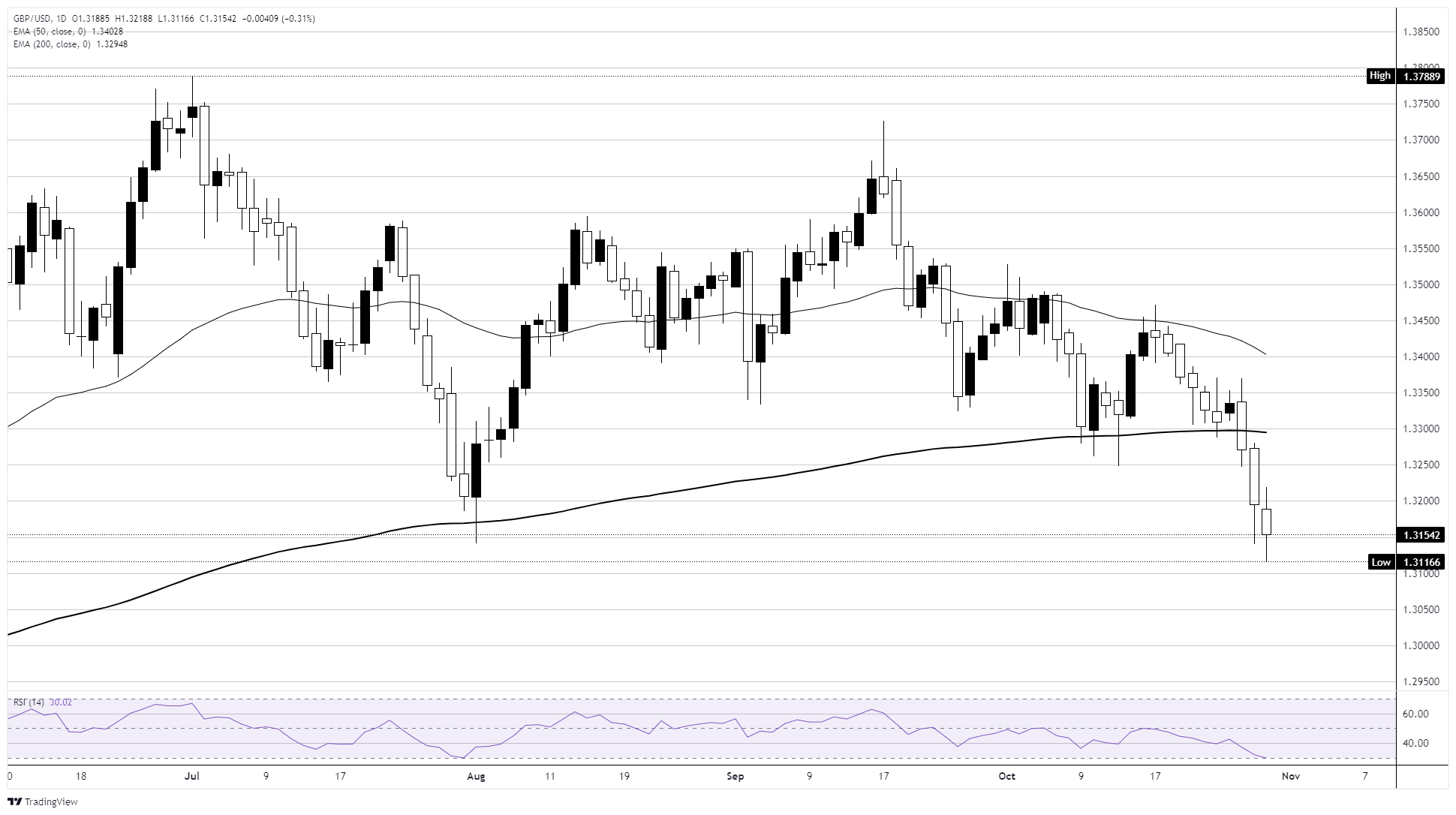GBP/USD tests six months lows as Pound Sterling continues to sink
- GBP/USD fell again on Thursday, down over 2% in October.
- Cable has declined nine of the last ten trading days.
- Economic data remains limited heading into the end of the trading week.
GBP/USD fell again on Thursday, grinding down toward the 1.3100 handle and tipping into six month lows at 1.3116. The Pound Sterling (GBP) continues to shed weight against the US Dollar (USD), and is down over 2% against the Greenback through the month of October alone.
Cable has declined for all but one of the last ten straight trading days, plummeting from a half-hearted swing high into 1.3450 and is now knocking on the 1.3100 handle. GBP/USD has fallen below the 200-day Exponential Moving Average (EMA) near 1.3275, setting up Pound sellers for a continued backslide.
The Federal Reserve (Fed) cut interest rates this week, as many had expected. What caught markets off guard this week was a cautious pivot from Fed Chair Jerome Powell, who warned that a lack of official data sources during the US government’s federal shutdown has made it nearly impossible for the Fed to analyze inflation and labor data, its two most important datasets.
Powell’s pseudo-hawkish (or rather, anti-dovish) shift rugpulled investors who were widely anticipating a third straight interest rate cut in December. Market bets have shifted back a month to January, and the potential for a delay in a third rate trim has bolstered the US Dollar, breathing fresh life into the lungs of a Cable bear run that has been chugging along since the middle of October.
GBP/USD daily chart

Pound Sterling FAQs
The Pound Sterling (GBP) is the oldest currency in the world (886 AD) and the official currency of the United Kingdom. It is the fourth most traded unit for foreign exchange (FX) in the world, accounting for 12% of all transactions, averaging $630 billion a day, according to 2022 data. Its key trading pairs are GBP/USD, also known as ‘Cable’, which accounts for 11% of FX, GBP/JPY, or the ‘Dragon’ as it is known by traders (3%), and EUR/GBP (2%). The Pound Sterling is issued by the Bank of England (BoE).
The single most important factor influencing the value of the Pound Sterling is monetary policy decided by the Bank of England. The BoE bases its decisions on whether it has achieved its primary goal of “price stability” – a steady inflation rate of around 2%. Its primary tool for achieving this is the adjustment of interest rates. When inflation is too high, the BoE will try to rein it in by raising interest rates, making it more expensive for people and businesses to access credit. This is generally positive for GBP, as higher interest rates make the UK a more attractive place for global investors to park their money. When inflation falls too low it is a sign economic growth is slowing. In this scenario, the BoE will consider lowering interest rates to cheapen credit so businesses will borrow more to invest in growth-generating projects.
Data releases gauge the health of the economy and can impact the value of the Pound Sterling. Indicators such as GDP, Manufacturing and Services PMIs, and employment can all influence the direction of the GBP. A strong economy is good for Sterling. Not only does it attract more foreign investment but it may encourage the BoE to put up interest rates, which will directly strengthen GBP. Otherwise, if economic data is weak, the Pound Sterling is likely to fall.
Another significant data release for the Pound Sterling is the Trade Balance. This indicator measures the difference between what a country earns from its exports and what it spends on imports over a given period. If a country produces highly sought-after exports, its currency will benefit purely from the extra demand created from foreign buyers seeking to purchase these goods. Therefore, a positive net Trade Balance strengthens a currency and vice versa for a negative balance.

